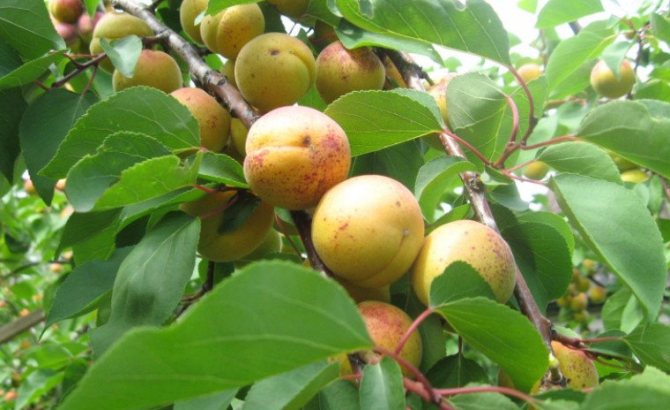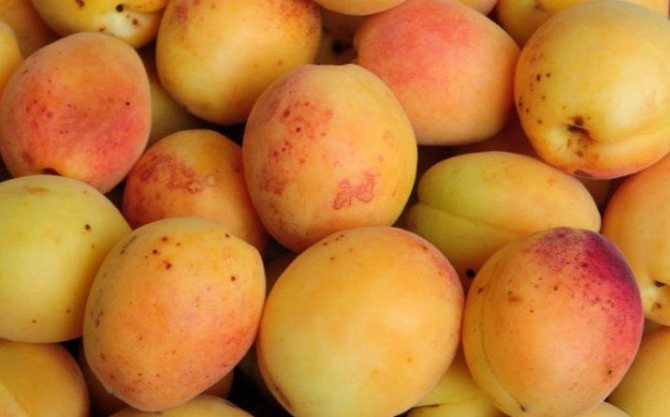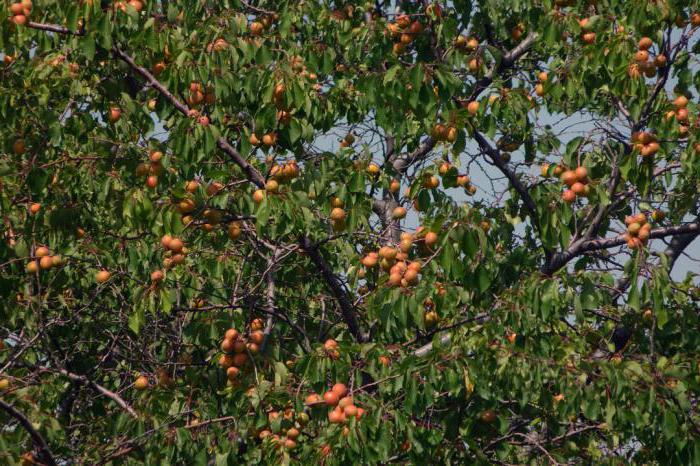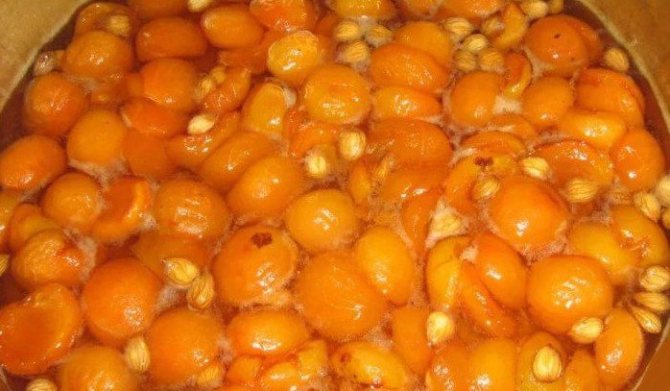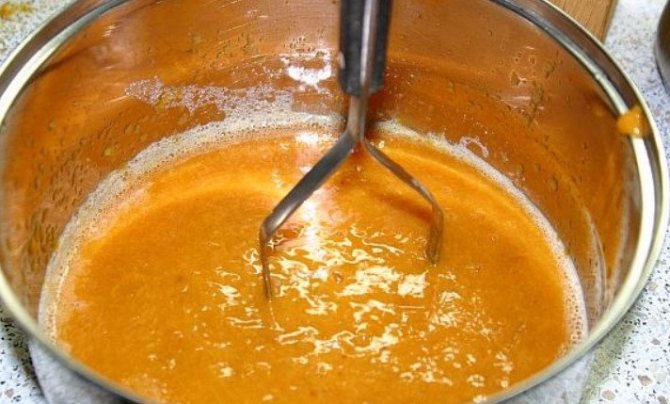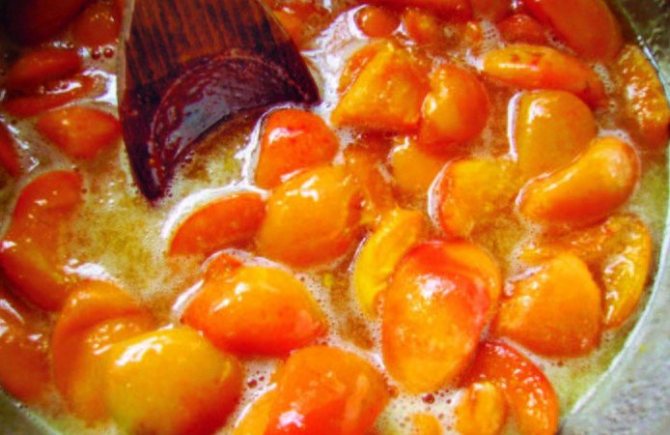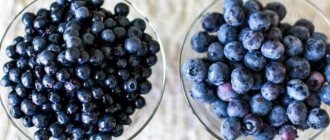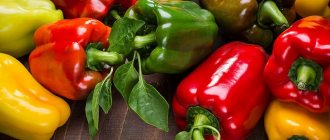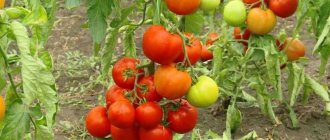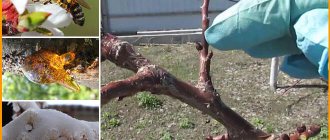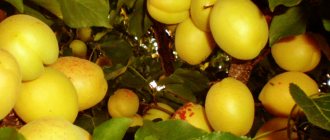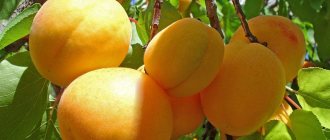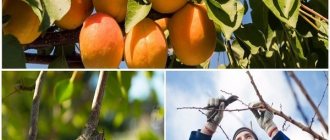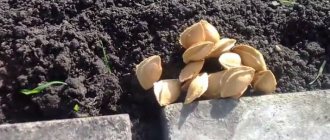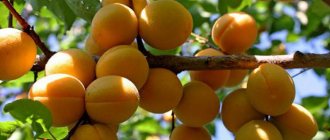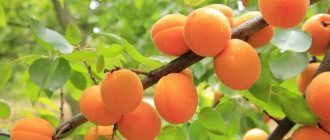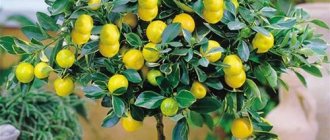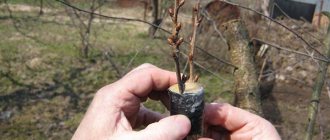Varietal and wild-growing apricots
The beneficial properties of the "sun fruit" have been known for a long time. The culture is also very different for its capriciousness and exactingness to the content and climate. The plant prefers sunny places with warm winters. Modern breeders have developed varieties that are more resistant to frost and long winters.
"Sunny fruits" can be consumed fresh and dried. Dried apricots are probably known to many connoisseurs of healthy and tasty dried fruits, they are made from the harvest of certain varieties. Regular use of delicious fruits with a delicate aroma helps to restore strength, strengthen immunity, and improve the body as a whole.
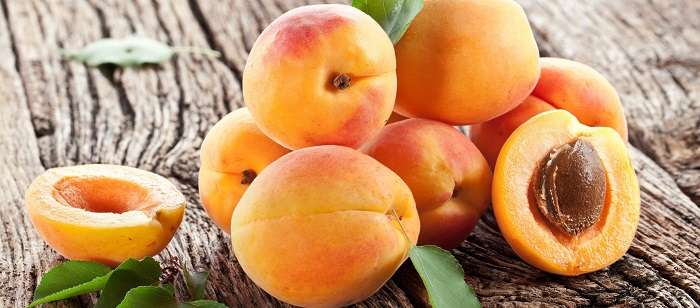
There are a huge number of species of this appetizing plant. In Latin it is called Prunus armenika (Armenian plum), in China - ansu, in Korea - mum.
But there is a wild apricot that is successfully grown in all regions, including those with unfavorable climates.
Wild apricot poles also have many different names - yellow-leaf, kurega. Outwardly, these two plants are completely different. But thanks to the efforts of breeders, there are varieties of crops that cannot be distinguished from each other with an unprofessional look.
Differences between apricots and vents
The similarities and differences between poles and apricots (the difference is not noticeable externally) are:
- The size. Many apricots are much larger "wild", but there are varieties with the same fruit size.
- Taste qualities. The apricot is sweet, the pole is sour - it is very difficult to confuse. Wild fruits often taste bitter, and they do not smell so exquisite and strong.
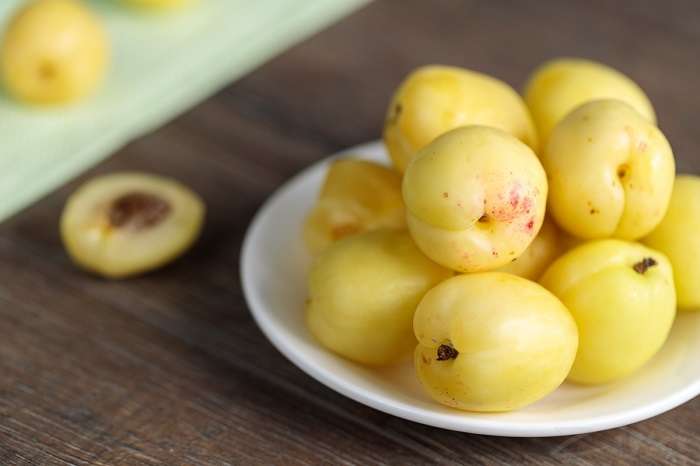

- The consistency of the pulp. In varietal fruits, the pulp is homogeneous and easily separates from the stone. The zherdel is characterized by a fibrous pulp that is difficult to separate from the stone.
- To the bone. In a varietal plant, it is small. Zherdela is the owner of a bone with large walls and an inedible core.
Outwardly, the fruits are very similar. But how to distinguish an apricot from a perch when choosing a seedling is already a problem. After all, the growing conditions for these very different plants are not similar to each other. If a wild apricot can grow in any area and does not need special care, then a grafted (varietal) apricot will require maximum effort and time from the gardener until it grows up and acclimatizes.
Appearance
Less experienced gardeners ask themselves: what is the difference between a perch and an apricot? It really is, it is far from the same fruit. Zherdela grows in the south of Russia, Ukraine, the Caucasus and Central Asia. Such a tree can often be found both in summer cottages and along country roads. In spring, blossoming flowers delight with their beauty.
This wild apricot is maintenance-free. It grows actively, turning into a tall tree with a spreading crown. The life span can last an average of 30-60 years. There were copies that were able to celebrate their 100th anniversary.
Description of apricot
The apricot tree develops very quickly, which allows you to feast on sweet and healthy fruits already for 5 years. There are varieties of modern selection that give the first harvests in a couple of years after planting a seedling. An adult tree reaches a height of 5-6 meters, has a pyramidal crown. Fruits are tied on annual shoots. The plant blooms with white-pink buds that open from the bud.The flowering period is 7-10 days.
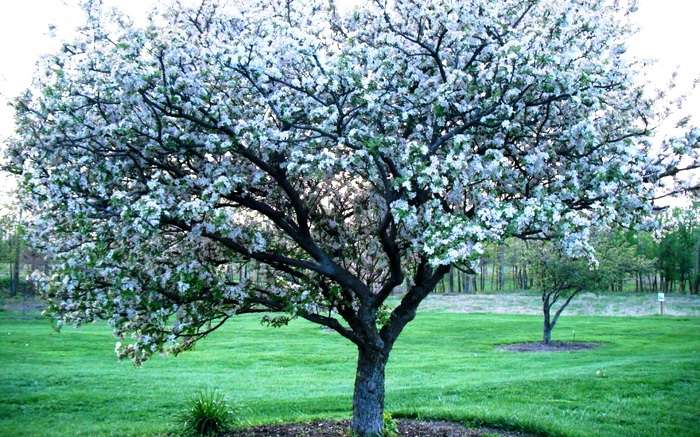

The crop is self-pollinating, but some varieties require pollinators.
The culture is propagated by seedlings and cuttings. When sowing seeds, maternal characteristics are not preserved.
Requires competent and regular watering, the introduction of nutrients. Young specimens prefer sunny locations. Planting material is planted in the lightest area without drafts. The soil is fertile soils.
The plant has a special root system. It is mainly located superficially - horizontal roots are hidden at a depth of 60 cm and have a growth diameter 2 times larger than the crown. The main vertical roots grow to a depth of more than 5 meters.
There are troubles when growing apricots:
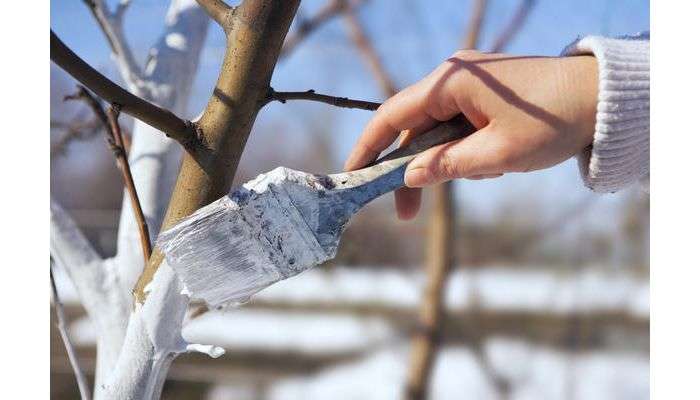

Growing a varietal tree healthy and strong is a whole science. Having coped with this task successfully, you can enjoy healthy fruits for a long time.
Description of Zherdela
Jardela is distinguished by its undemanding content. Grows on all types of soil, resistant to infectious diseases. Apricot or zherdel - an individual solution for each gardener. Some professionals successfully grow wild game in places where cultivation of a varietal seedling is not possible. Very often it is used as a stock for varietal stone fruit crops.
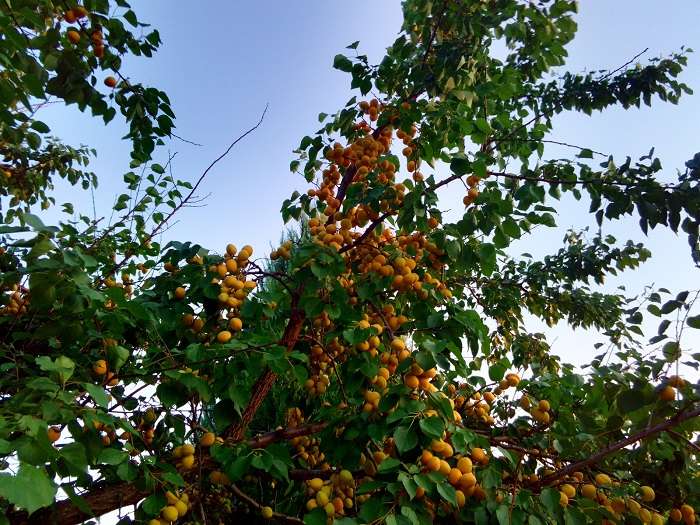

Wild apricot produces smaller fruits, but the branches are practically dotted with them. There are different subspecies, differing in characteristics: in size, taste, pulp consistency. Some game species are significantly inferior to varietal apricots, and some are many times superior.
Important! Unlike the varietal variety, the use of the bones of the vents is strictly prohibited.
Despite the fact that wild apricot loses in many respects to varietal specimens, it can successfully replace it. The main thing is to choose the right variety. In addition, fries perfectly quench thirst in intense heat, normalize metabolic processes in the human body, fill cells with vitamins and microelements.
Chemical composition
The fruit of the zherdel contains a rich palette of various vitamins.
One hundred grams of fresh fruit contains:
- vitamin A - 0.267 mg;
- vitamin B1 - 0.03 mg;
- vitamin B2 - 0.06 mg;
- vitamin B3 - 0.7 mg;
- vitamin B4 - 1 mg;
- vitamin B5 - 0.3 mg;
- vitamin B6 - 0.05 mg;
- vitamin B9 - 0.003 mg;
- vitamin C - 10 mg;
- vitamin E - 1.1 mg;
- vitamin H - 0.3 μg;
- vitamin PP - 0.8 mg;
- beta-carotene - 1.6 mg.
Important! Wild apricot, in contrast to the cultivated one, has good frost resistance and disease resistance, as well as a higher yield, and in terms of taste is practically not inferior to varietal fruit.
Macro and microelements per one hundred grams of fresh fruit:
- aluminum - 364 mcg;
- boron - 125 mcg;
- vanadium - 25 mcg;
- fluorine - 11 μg;
- nickel - 8 mcg;
- molybdenum - 8 mcg;
- cobalt - 2 μg;
- iodine - 1 μg;
- potassium - 305 mg;
- calcium - 28 mg;
- phosphorus - 26 mg;
- magnesium - 8 mg;
- sulfur - 6 mg;
- silicon - 5 mg;
- sodium - 3 mg;
- chlorine - 1 mg;
- iron - 0.7 mg;
- manganese - 0.22 mg;
- copper - 0.14 mg;
- zinc - 0.082 mg.
Gerdela: description and use of wild apricot
Wildlife is an unvaccinated apricot. It has other names as well: vents, morel and yellow leaves. Dried fruits are called dried apricots, and in the Caucasus, apricots. There is an opinion that the fruits of wild apricot are tasteless and inedible, but this is not the case.The fruits of this culture can compete with grafted apricots.
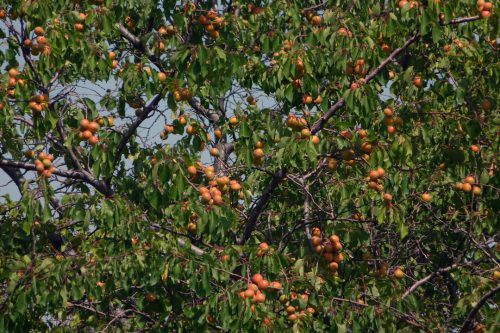

Wild game can produce tasty fruits
Description
For the first time, a wild apricot was discovered in China. Today it is growing in other countries as well. Trees of medium height are often bush-shaped. Ovate leaves with an elongated tip have small denticles along the edge. The pink or white flowers bloom well before the leaves appear. Trees enveloped in a cloud of flowers emit a unique scent. The fruits are similar in appearance to a red-yellow drupe. Compared to the berries of a domesticated relative, they are not so sweet.
The stone is large, flattened on both sides. Its thick walls cover the nucleus, which should not be eaten because it can cause food poisoning.
Beneficial features
Fruits contain different substances:
- Carotene. This substance protects against UV rays. Therefore, in the summer, apricot should be an irreplaceable product. Their pulp can be used as a lotion to treat sunburn.
- Pectin. Neutralizes the negative effects of harmful substances.
- Cellulose. Normalizes bowel function and prevents constipation.
- Calcium and salt. These substances are very beneficial for women during pregnancy and breastfeeding.
Also, the delicious fruits of the pole normalize the work of the sweat and thyroid glands, relieve fatigue after prolonged work at the computer, activate the metabolism in the body, and the juice obtained from the fruit is used as a natural diuretic.
https://youtu.be/vWMypAHP-es
Reproduction
The main breeding method is seed. The seeds are used to grow the stock, which gives healthy, large and actively developing trees. For sowing, seeds collected in the fall are used. In the spring, they give shoots, which, under favorable conditions, can reach a height of up to 1 m until August. For planting, you need to choose strong and viable seedlings.
Wild apricot can be found on poor and dry soil along roads, in forest plantations, on rocky slopes, but not swampy and constantly flooded soils. It has a powerful and well-developed root system, thanks to which the plant survives drought well.
The planting pit is prepared the same as for the cultivated apricot. At its bottom, a drainage of pebbles and a cushion of nutrients from sand, peat, humus and wood ash are laid. Then a seedling is placed in it and covered with earth so that all the roots are hidden, watered abundantly with water.
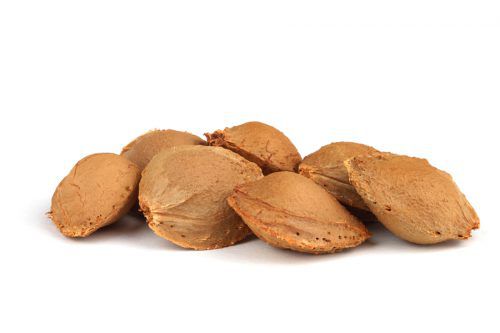

Wild game can be grown from seed
Apricot care
In order for a tree to please with a bountiful harvest, it must be properly looked after:
- Watering. This is a non-moisture-loving culture, so frequent watering is not needed. Young trees are watered once every two weeks, and a little more often in dry weather. From the middle of summer, watering is stopped, because the high humidity reduces the winter hardiness of the plant. The last watering is carried out in late summer after harvest.
- Pruning. It is important to carry out pruning in a timely manner for the active growth and development of the tree. In the spring, old and bad branches are removed that can no longer bear fruit. In summer, the active growth of fruit branches begins, therefore, thinning of the dense crown may be required, since the fruits cannot ripen in it. Uniform illumination of the apricot crown ensures the active growth of fruiting branches. Broken, diseased and withered branches are cut in the fall.
- Preventive treatment. Despite the resistance to diseases and pests, it is necessary to carry out preventive treatment. In the spring, dormant kidneys are treated with a urea solution. After swelling of the kidneys, it cannot be used, therefore, Bordeaux liquid or copper sulfate is used. At the same time, the trees are treated with Ekoberin or Zircon. Before the onset of winter, the culture is again treated with urea.
- Top dressing.Throughout the season, the fruit tree is fertilized several times. In the spring, nitrogen fertilizers are applied, at the beginning of summer - urea, and at the end of summer - potassium-phosphorus compositions. In early autumn, fertilize with compounds containing minerals, calcium, potassium and phosphorus.
- Wintering. In order for young plants to endure the winter well, you need to take care of their insulation. For this purpose, the tree trunk is tied with spruce branches, and the root system is insulated with needles. In the spring, the insulation must be removed so that the tree does not overwhelm.
Cooking use
In cooking, perches are used like an ordinary apricot. Compotes, preserves, jam are cooked from it, and the filling for pies and sweets is prepared. The fruits are dried and made into juices and liqueurs. The juice obtained from these fruits is fermented without adding sugar, then distilled and vodka is obtained.
The high pectin content allows these fruits to be used to prepare delicious treats such as marshmallow, marmalade, jelly and others. The dried fruit is called dried apricots.
Fruits contain a large amount of sugar, so they should not be consumed by overweight and obese people. For the same reason, people with diabetes need to be very careful with them.
Cooking recommendations
In addition to eating fresh fruits, both types of fruit make excellent preserves, jams and marmalade. Many dessert varieties of a cultivated type are not suitable for these purposes in the best way, they are better eaten fresh. But for making compote, jam and jam, fried is perfect.
From both varieties, you can make dried apricots (halves of the fruit without a bone), apricot (with a bone), kaisu (the bone is removed through a small hole, without a major violation of the integrity of the fruit), ashtak (a bone is taken from the whole fruit, from which the kernel is removed and placed back into fetus).
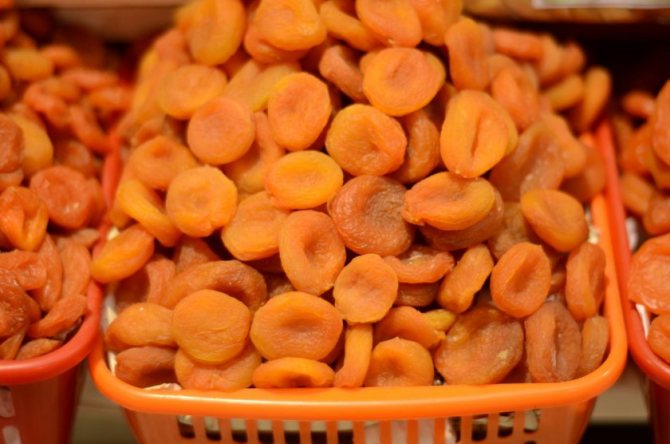

Dried apricots and kaisa are used for filling pies, making various sweets and even pilaf. Apricot is mainly used to prepare compote. Only apricot is used to prepare ashtak. Jardela is used as a raw material for the preparation of spirits and home brew. She, along with the plum, is very common in the Mediterranean countries and the Balkans.
Gerdela and apricot - what's the difference?
Wild apricot in some regions is called a zherdel, in addition, the fruit has other names: yellow-leaf, kurega, jardel, zherdel. To put it simply, the vents are a wild form of apricot that differs from culture and appearance and some other qualities. From the description it becomes clear that both fruit trees belong to the same genus (Plum), and, accordingly, to the Pink family.
Despite the close relationship of the two plants, they differ not only in the appearance of the fruits, but also in some other features. Zherdela does not require care, is absolutely not picky about the surrounding conditions, tolerates frosts well.
It can be grown from a seed, or by taking a young shoot from under any tree. And varietal cultivated species are grown by vegetative propagation, grafting a stalk onto a stock. Pole, plum, cherry plum can be used as a stock.
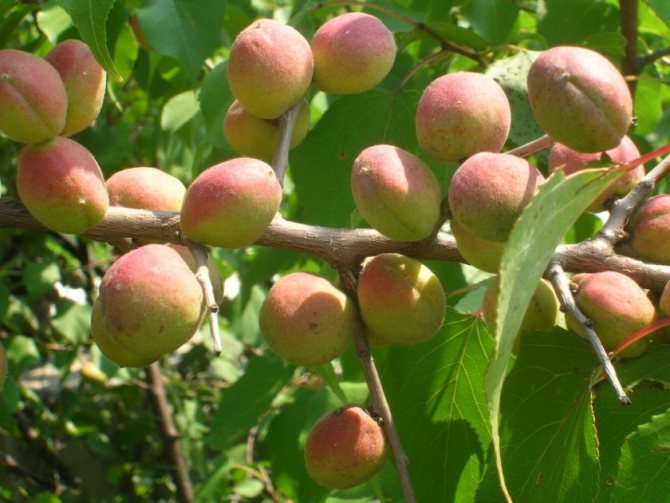

It is believed that poles contain more vitamins than apricots and are much more productive. It can reach a height of 12-14 m and more. The plant "lives" for 30-60 years or more.
Wonderful tree
The homeland of apricot is the Eurasian continent. The botanical name of the species is Armenian plum. It is not so easy to meet a wild tree in nature. Even in Armenia itself, which became the starting point from where the fruits quickly spread to other countries, there are practically no progenitor trees.
The wonderful apricot was nicknamed because it does not require complex specialized care. It is enough only to periodically water it, and also to cut it in order to rejuvenate and give the crown a beautiful shape. Especially caring gardeners prefer to pluck apricots from branches so that they do not crack when dropped.Some summer residents stretch the fabric, allowing the fruit to separate from the tree on its own.
The main need of an apricot (wild or not) is a lot of sun. For them, you should choose the most illuminated place. Then the yield of the tree will be abundant.
Useful and harmful properties
The beneficial and harmful properties of the two types differ little.
- First, about the benefits that the use of fruits brings in both forms - cultural and wild:
- useful for anemia, help to normalize the functions of hematopoiesis;
- increase tone, add strength and endurance;
- have a beneficial effect on the condition of the heart and blood vessels;
- have a remarkable quality - they thin phlegm, which makes the fruit an excellent expectorant for dry cough;
- helps to normalize the functions of the gastrointestinal tract;
- have a mild laxative effect;
- are able to reduce slightly elevated body temperature to normal;
- quench thirst;
- the high content of vitamin C helps to strengthen the immune system, and, accordingly, increases the body's resistance to various diseases;
- normalize the acidity of gastric juice;
- regulate the functions of the pancreas, liver and gallbladder;
- useful for pyelonephritis;
- stimulate brain function and improve memory;
- have antioxidant properties, which helps to reduce the risk of cancer cells and remove free radicals from the body.
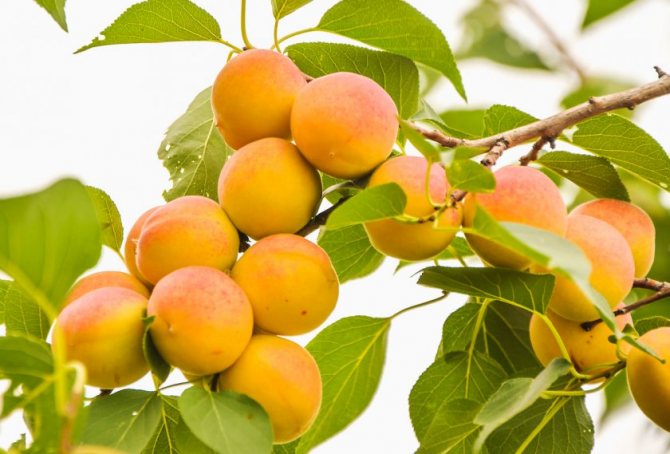

It should be noted that the sugar content in apricot is higher than in jardels, so people who want to reduce their carbohydrate intake or have diabetes mellitus are better off eating jardels.
- A few words about the possible negative consequences that the use of fruits can bring:
- it is undesirable to eat on an empty stomach due to the rather strong effect of acid on the walls of the stomach;
- it is believed that eating raw fruits with water can provoke diarrhea;
- excessive consumption of fruits, especially sugar-rich apricots, can be detrimental to the figure;
- apricot should be used with extreme caution in diabetes mellitus;
- diseases of the digestive system, dysbiosis;
- you should not eat fruits with a low heart rate (less than 55 beats per minute);
- it is undesirable to eat unripe fruits, since they have a lot of acid, which can bring painful sensations in the gastrointestinal tract, especially for people suffering from diseases of the digestive system.
Storage conditions
Gerdela, like cultivated apricot, has a rather delicate texture and can be damaged during transportation and storage. Therefore, be careful with this fruit, place it in the drawers in one layer and store it in a cool place. Just do not count on long-term storage, even ideal specimens in a refrigerator (about zero degrees Celsius) will not last longer than a month.
Therefore, in order for this wonderful fruit to delight you throughout the year, it is worth drying or canning it. Moreover, the vents perfectly retain their taste and useful qualities with these harvesting methods.
Difference and similarity between plants
Often, the question of how to distinguish an apricot from a perch is of great concern to people who are not versed in gardening. Sometimes it is almost impossible to distinguish two fruits at first glance - they have incredible similarities.
Did you know? Wild game bones must not be eaten!
But there are differences between an apricot and a poles - and the difference is quite significant! You already know that these are two completely different plants that have unique characteristics. Let's figure out what external qualities distinguish a wild game from an ordinary yellow fruit:
- The size . Zherdel is several times less than the usual 150 grams inherent in apricot, the fruit grows to a maximum of 40 grams;
- Taste. Varietal fruits are distinguished by sweetness and juiciness - this is not found in wild fruits.They contain less sugar and juice, slightly bitter and give off sourness;
- Pulp. Less firm than normal fruit. Differs in friability, has a fibrous structure, poorly separates from the bone;
- The surface of the pole is smooth, without pubescence;
- The bone. Very large and inedible, with thick walls that are difficult to break. Possesses an unpleasant bitter aftertaste due to the content of a large amount of acids;
- The smell is less bright, almost not expressed, while the varietal culture of apricot is distinguished by a delicate "sunny" aroma;
- There are small thorns that the usual culture does not have.
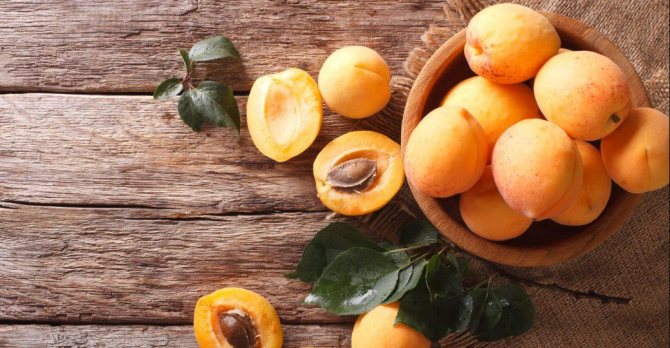

The difference between apricot and perch also lies in the principles of planting and growing.
- The wild perch tree gives a high yield and easily tolerates drought due to its powerful root system. Varietal culture is capricious, it needs warmth and constant watering;
- Wildlife grows and bears fruit even on poor soils, does not require regular pruning and feeding;
- The pole easily withstands cold, frost resistance reaches -20C;
- Wild culture is resistant to various diseases and pests, unpretentious.
Now you understand that it ripens faster and contains more fruits on the tree - this is wild! Even inexperienced gardeners can cope with it, while the apricot is quite whimsical.
Definitions of fruit
Before studying how the apricot differs from the perch, you need to get acquainted with the detailed descriptions of both types of fruits. These are different fruits that should not be confused with each other!
If you look at the photo, you will see the familiar rounded yellow fruits - for sure, you have loved them since childhood!
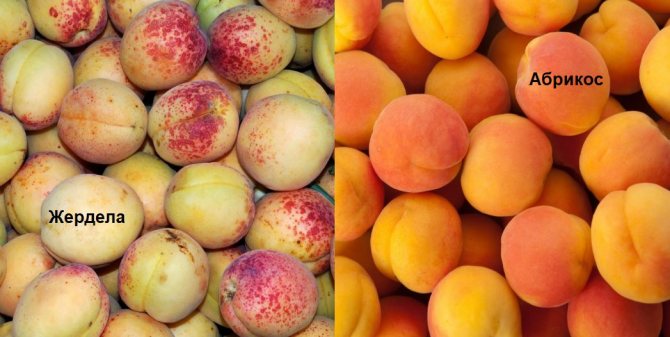

Apricots
- Belong to the genus Plum;
- Homeland - China, now grown in Armenia, Iran and Turkey, North Africa;
- They grow on a deciduous tree 5-8 meters high;
- The leaves are small, oval, forming a lush crown;
- Flowers appear in March-April on each branch;
- The fruits ripen in June and weigh from 30 to 150 grams.
Zerdeli
And now let's talk about wild apricots - they've got it!
- Came to us from China, is now grown in Asia, Europe and Russia;
- The harvest ripens in the first half of August;
- The pole tree reaches 15-17 cm in height;
- The flowers are medium in size, have a pleasant smell and a pinkish-white color;
- Fruiting in 4-5 years after planting, consistently from year to year
- Fruit weight is not more than 60 grams.
This variety of apricots can be eaten fresh and used as an ingredient in a variety of dishes.
You already understand that these two plants are completely different - varietal apricots and wild, unvaccinated poles. This sign alone is not enough, it's time to study in detail what is the difference between fruits and trees! We also note if there is any similarity.
We also recommend: Broth of oats for the liver
Benefit and harm
It's time to talk about the benefits of these products - a wild plant is not inferior to a varietal culture in terms of the number of positive properties, although it has a difference in taste. Positive properties can be safely considered an important similarity between apricot and pole, there is not much difference here:
- Prevents constipation;
- Regulates bowel function;
- Protects the skin from excess UV radiation;
- Increases the level of hemoglobin;
- Lowers blood pressure;
- Replenishes iodine deficiency;
- Activates the brain;
- Lowers cholesterol levels;
- Strengthens the immune system.
We would like to draw your attention to the fact that the mouthpiece should not be used in case of diabetes mellitus and gastritis, with reduced thyroid function. It is forbidden to split and eat the poisonous bone of the vents, as well as combine with milk and cold water, so as not to provoke diarrhea.
Are fruits replaceable in cooking?
Is there a difference between a pole and an apricot in cooking? Both fruits can be used without restrictions for their intended purpose in the kitchen:
- Cook preserves and jams;
- Making jam as a filling for baking;
- Boil compotes, make alcohol tinctures;
- Canning in banks.
Now you know exactly how the poles differ from apricots - you will never again confuse two fruits with each other! Choose only high-quality, tasty and ripe fruits, enjoy the aroma and benefits of fruits every day.
Recipes
Zherdela is perfect for culinary recipes, as it has not only excellent taste and aroma, but also an attractive bright appearance. Perhaps that is why both adults and children love her so much.
Jam
Zherdela has an extraordinary aroma and a pronounced taste of honey, so it is perfect for jam.
Jam "Five minutes".
Ingredients:
- one kilogram of pitted fruit;
- one kilogram of granulated sugar;
- 0.5 teaspoon citric acid.
- Wash the fruits thoroughly and remove the seeds from them, cutting into two halves.
- Place the vents in a saucepan, cover with sugar, cover and shake well.
- Without waiting for the fruit to start juice, add one glass of clean water to the pan and put on low heat.
- After boiling, remove the foam and leave to boil for about five minutes.
- Remove from heat, wait until it cools completely.
- Prepare jars and lids, wash and sterilize them.
- Return the jam to low heat, add citric acid after boiling and mix everything gently.
- Arrange the jam in containers and roll them up immediately.
- Place the jars under a warm blanket, turning them upside down.
- Send the cooled containers to the pantry for storage.
- one kilogram of fruit;
- about 100 grams of almonds (by the number of fruits);
- one kilogram of granulated sugar;
- 0.5 liters of clean water.
Did you know? Wild apricot wood is known for its excellent acoustic properties, therefore it is used for the production of soundboards for musical instruments. The tree itself is quite resistant, capable of withstanding both drought and short-term severe frosts, and bears fruit for about a hundred years.
Jar with almonds.
Almonds are surprisingly harmonious with the taste of the vents, so this jam can definitely become your favorite.
Ingredients:
Important! Try not to overcook the jam, otherwise the nuts will fall out of the vents, and the fruits will boil.
Properly cooked jam will stand at room temperature for about a year without any problems. And even longer in a cool cellar or basement.
Since the vents are a rather delicate product that easily crumples and loses their shape during heat treatment, many housewives prefer to cook jam instead. Moreover, the gustatory qualities of the vents remain at the same high level.
Ingredients:
- 1 kilogram of a perch;
- 1 kilogram of granulated sugar.
Tip: to add sourness, you can add a few currant berries or a little citric acid to the jam.
Did you know? One of the proofs of the usefulness of the zherdel is a tribe living between Pakistan and India, which, despite the poor diet, is distinguished by its longevity. Zherdela is the main product of their food, it is consumed in large quantities and in various forms.
This fruit can be used to make interesting sauces that go well with meat or poultry.
Simple sauce
Ingredients:
- 0.5 kilograms of mashed potatoes;
- a tablespoon of granulated sugar;
- a teaspoon of salt;
- 3 medium cloves of garlic;
- 1/3 chili pepper
To prepare mashed potatoes, the fruits of the vents are placed in boiling water, boiled for two minutes, after which the seeds are separated and squeezed into mashed potatoes. Then add sugar, salt, finely chopped chili peppers, crushed garlic, a little dill and boil for another 15 minutes. The resulting mass is crushed in a blender, brought to a boil and laid out in pre-sterilized containers.
Spicy sauce
Ingredients:
- 0.5 kilograms of mashed potatoes;
- 1.5 teaspoons of salt;
- 1 dessert spoon of vinegar;
- 1/3 teaspoon black pepper
- 3 cloves of garlic;
- 1 medium onion;
- 1 medium bell pepper.
Mashed potatoes are boiled for 15 minutes over low heat, then salt, vinegar, chopped black pepper, crushed garlic, finely chopped bell peppers and onions are added. They boil for a couple of minutes, then grind in a blender, bring to a boil and lay out in pre-sterilized containers.
You can add some lemon juice, grated ginger and ground coriander to add a spice to the sauce.
Zherdela is such a versatile fruit that you can even make a soup from it.
Ingredients:
- 0.5 kilograms of fruit vents;
- 700 grams of milk;
- 2 tablespoons of starch;
- 1 egg yolk;
- a few almonds;
- salt, sugar, butter.
For cooking, it is better to take not very sweet fruits. To begin with, add starch to the milk and bring to a boil. Fruit puree is mixed with milk, brought to a boil again, almonds, salt and sugar are added and everything is whipped with a blender. Remove the pan from heat and add the egg yolk. Before serving, put a small piece of butter in a plate. Bon Appetit!
Now you know how many delicious dishes can be prepared from the vents, and how much benefit this sunny fruit will bring to your body. Don't forget to include it in your diet and be healthy!
Tags: apricot, zherdel, differ
About
«Previous post

